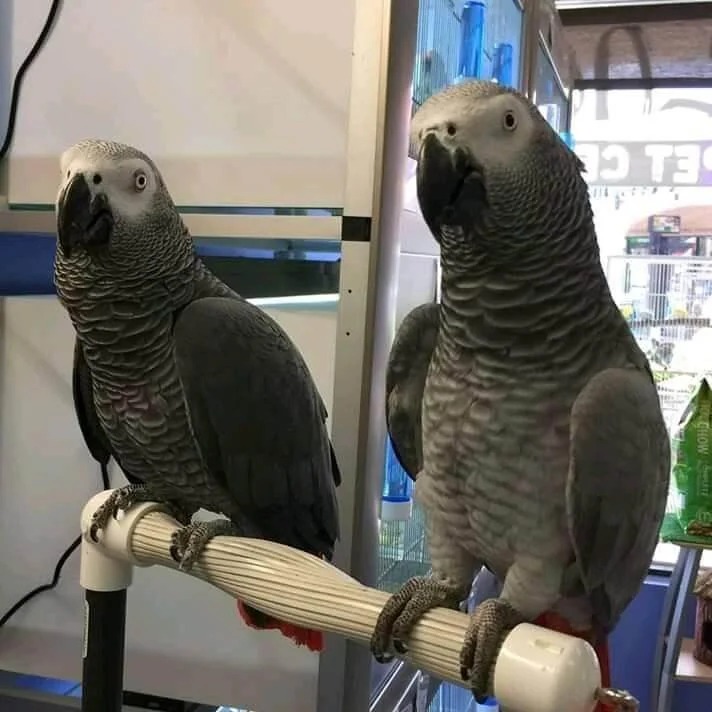The African Grey Parrot is one of the most intelligent and sociable bird species in the world. Known for their exceptional cognitive abilities and remarkable vocal skills, these birds can also be quite challenging to care for. To ensure that these striking creatures thrive in captivity, it's essential to understand their natural habitat and the factors that contribute to their wellbeing. This article provides a detailed overview of the African Grey Parrot's habitat, including its environmental characteristics and conservation status.
Natural Habitat of the African Grey Parrot
Geographic Distribution
The African Grey Parrot is native to the rainforests and woodlands of Africa, specifically in the following countries:
- Central to West Africa: Including countries like the Democratic Republic of the Congo, Cameroon, Ivory Coast, and Ghana.
- Specific Zones: These birds thrive in various forest types, including:
- Lowland rainforests
- Flooded forests
- Wooded savannas
Environmental Characteristics
Climate
The climate in the habitats of African Grey Parrots is predominantly tropical, characterized by:
- High humidity levels
- Consistent temperatures ranging from 20°C to 30°C (68°F to 86°F)
- Seasonal rainfall, with a wet season that supports lush vegetation and a dry season that influences their feeding behavior
Vegetation
African Grey Parrots are particularly fond of habitats with abundant fruit-bearing trees and flowering plants. The following types of vegetation are critical for their survival:
- Fruit-producing trees: These provide a staple food source rich in nutrients.
- Broadleaf trees: They offer shelter and nesting sites.
- Thickets and underbrush: These areas help protect against predators and provide foraging opportunities.
Nesting Habitats
African Grey Parrots typically nest in tree cavities, where they lay their eggs. The ideal nesting location is one that offers protection from the elements and predators. Nesting sites are often found in:
- Hollowed-out trees: These provide both safety and a stable environment for raising young.
- High elevations: Nesting in tall trees can help avoid ground predators.
Social Structure and Behavior
African Grey Parrots are social birds and often live in flocks. Their social behaviors and hierarchies are crucial to their survival in the wild, influencing:
- Foraging techniques: Often seen feeding in groups, which increases the chances of spotting food and avoiding danger.
- Communication: Their social nature facilitates complex interactions, which is vital for bonding and establishing relationships within the flock.
The Importance of Preserving Their Habitat
The preservation of the African Grey Parrot's natural habitat is critical for their survival. Key factors contributing to habitat degradation include:

- Deforestation: Logging and clearing land for agriculture drastically reduce their living spaces.
- Illegal wildlife trade: The capture and sale of African Grey Parrots can deplete wild populations.
- Climate change: Alterations in weather patterns can disrupt breeding cycles and food availability.
Efforts to Preserve Their Habitat
Several conservation initiatives are underway to protect the African Grey Parrot's natural habitat:
- Protected Areas: Establishing wildlife reserves to safeguard remaining populations.
- Community Education: Raising awareness about the importance of conserving these birds and their environments.
- Sustainable Practices: Promoting responsible forestry and agriculture to minimize habitat destruction.
| Conservation Initiative | Description |
|---|---|
| Protected Areas | Establishing reserves to safeguard habitats |
| Community Education | Informing locals about the importance of conservation |
| Sustainable Practices | Promoting tree planting and responsible land use |
FAQs about African Grey Parrot Habitat
What do African Grey Parrots eat in the wild?
african Grey parrot habitat Grey Parrots predominantly feed on:
- Nuts
- Fruits
- Seeds
- Berries
- Flowers
How can I create a suitable habitat for an African Grey Parrot at home?
To create an environment similar to their natural habitat, consider the following:

- Choose a spacious cage with ample vertical space for climbing.
- Provide various perches made from different materials.
- Include toys that stimulate mental engagement.
- Ensure a balanced diet with fresh fruits, vegetables, and pellets.
Why is habitat preservation important for African Grey Parrots?
Preservation ensures their survival by providing a safe environment for breeding, foraging, and social interaction, which are essential for the species’ overall health.
Are African Grey Parrots endangered?
The African Grey Parrot is listed as endangered due to habitat loss and illegal trapping for the pet trade.
Understanding the natural habitat of the African Grey Parrot is crucial for both conservationists and bird enthusiasts alike. By recognizing the importance of their native environments, it's possible to foster efforts aimed at preserving these remarkable birds and their ecosystems. Greater awareness, coupled with effective conservation measures, will aid in the protection of the African Grey Parrot, securing their place in the world for generations to come. Through education, advocacy, and responsible ownership, individuals can contribute to the wellbeing of these intelligent and beautiful birds, ensuring they can thrive both in the wild and as cherished companions.







